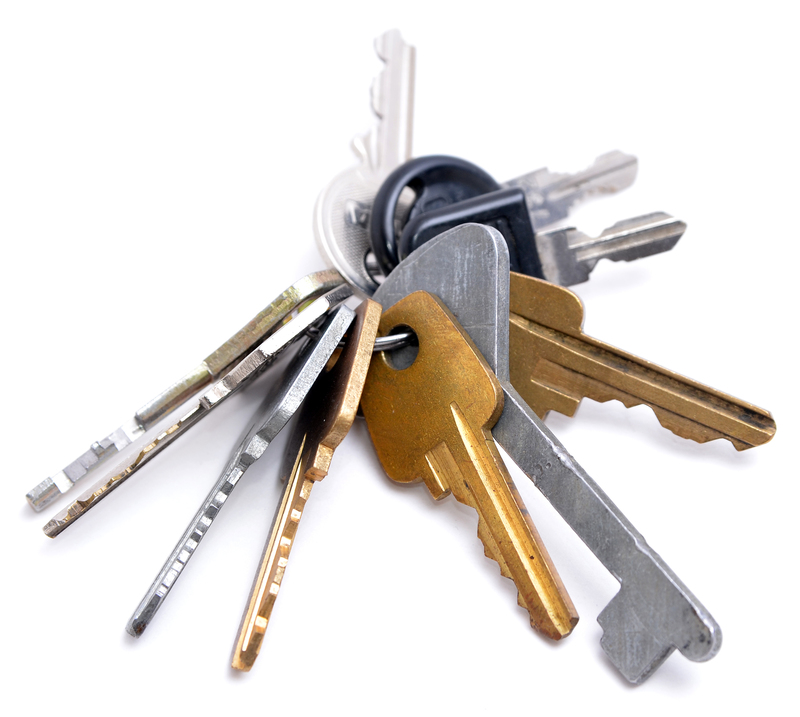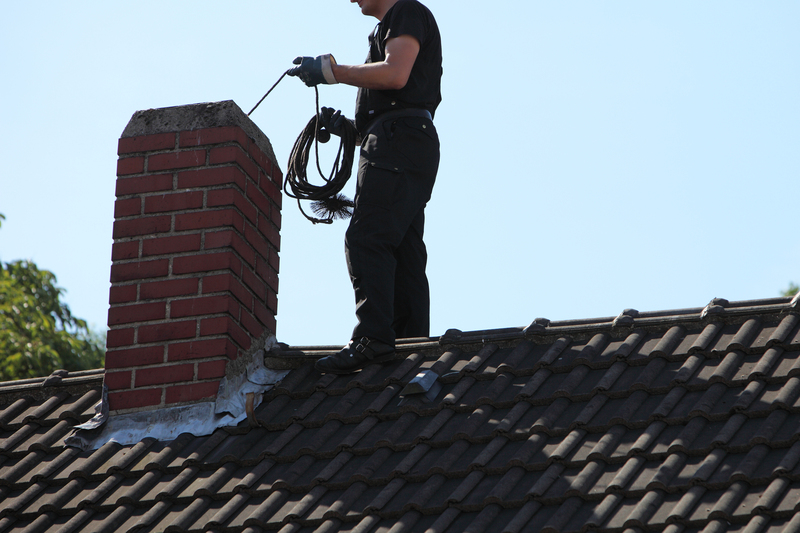Designing a Blissfully Clean, Allergen-Reduced Home Space
Posted on 20/09/2025
Designing a Blissfully Clean, Allergen-Reduced Home Space
A home should be a sanctuary--blissfully clean, serene, and healthy. For those suffering from allergies, designing an allergen-reduced interior is not simply a preference but a necessity. By making intentional choices in your home's layout, materials, and everyday maintenance, you can dramatically reduce allergens such as dust mites, pet dander, mold, and pollen. This comprehensive guide will walk you through creative and practical strategies for designing a clean, allergy-friendly home environment tailored for comfort, style, and well-being.
Why Focusing on Allergen Reduction Matters
According to the Asthma and Allergy Foundation of America, more than 50 million Americans experience allergies each year, and many of those sensitivities are triggered within the home. A high concentration of dust, mold, or pet dander can compromise health, aggravate asthma, and disrupt sleep. By designing a space to actively minimize allergen build-up, you make your home a true refuge--a place where you can breathe easy, sleep soundly, and enjoy daily living to the fullest.
The Science Behind Home Allergens
- Dust mites: Thrive in bedding, upholstery, and carpets; worsened by humidity.
- Pet dander: Tiny skin flakes and saliva shed by cats, dogs, and other animals.
- Mold spores: Grow in damp, poorly ventilated areas; a common asthma trigger.
- Pollen: Blown into the home from outdoors or carried on clothing and pets.
Understanding where allergens come from and where they accumulate is the first step toward an effective, long-lasting solution.

Key Principles for Designing an Allergen-Reduced Home
A truly allergy-friendly home design requires a blend of smart architectural choices, material selection, and ongoing maintenance. Here's how to organize your strategy:
- Choose easy-to-clean, non-porous surfaces.
- Enhance airflow and ventilation.
- Minimize clutter for minimal dust accumulation.
- Implement rigorous routine cleaning practices.
- Use hypoallergenic materials and finishes.
1. Choose the Right Flooring
Soft carpets may feel cozy, but they're notorious for trapping dust mites, pet dander, and pollen. For a blissfully clean, allergen-reduced interior, consider these alternative options:
- Hardwood flooring: Easy to clean and does not harbor allergens.
- Tile or stone: Resistant to mold and simple to mop.
- Luxury vinyl plank (LVP): Mimics wood's look, is moisture-resistant, and easily cleaned.
If carpeting is a must, select low-pile, tightly woven rugs made from synthetic materials, and ensure they're machine washable. Use area rugs sparingly and clean them regularly.
2. Opt for Allergy-Conscious Furnishings
Upholstery, draperies, and bedding are prime sites for dust and dander accumulation. Make smart choices like the following:
- Leather or faux-leather sofas and chairs: Wipe clean and do not trap allergens.
- Minimal or roller blinds for windows: Simple to dust and clean, compared to heavy drapes.
- Hypoallergenic bedding: Use pillow and mattress protectors labeled for allergy prevention.
- Synthetic-fill duvets and pillows: Less likely to harbor dust mites than traditional feather bedding.
3. Eliminate Clutter for a Clean Look
The more "stuff" in each room, the harder it is to keep dust at bay. Simplify your spaces by:
- Choosing built-in storage to reduce open shelving.
- Keeping floors and surfaces clear for easy cleaning.
- Selecting multi-functional furniture to store necessities out of sight.
A streamlined, minimalist aesthetic is not just modern--it's also healthier.
4. Improve Ventilation and Air Quality
A well-ventilated home prevents excess humidity, discouraging mold and dust mite growth. Consider these solutions to boost air quality:
- HEPA-filter air purifiers: Trap fine particulate allergens and improve indoor air quality.
- Dehumidifiers: Keep relative humidity below 50% to deter dust mites and mold.
- Exhaust fans: Use in kitchens and bathrooms to expel steam and odors.
- Regular HVAC filter changes: Use HEPA or electrostatic filters for best results.
Open windows periodically to allow fresh air to circulate, unless outdoor pollen counts are high.
Room-by-Room Design Solutions
Each home area poses unique challenges for allergen reduction. Here's how to create a clean, allergy-friendly environment in every room:
Living Room
- Sofa and chairs: Select wipeable fabrics or covers that can be laundered frequently.
- Flooring: Stick to hard, low-maintenance options and limit the use of area rugs.
- Electronics: Dust TVs, speakers, and remotes weekly.
- Decor: Opt for washable decorative pillows and avoid dried flowers, which can harbor dust and mold spores.
Bedroom
- Bedding: Launder sheets, pillowcases, and protectors in hot water weekly.
- Closets: Organize clothes and storage in closed bins to prevent dust accumulation.
- Pets: Keep furry friends out of bedrooms to cut down on dander.
- Flooring: Floor mats and carpets should be low-pile and washed regularly.
Kitchen & Dining Area
- Surfaces: Use stone, stainless steel, or sealed wood for easy wipe-down.
- Mold prevention: Fix leaks, and empty garbage frequently to avoid moisture and mold.
- Ventilation: Use range hoods and exhaust fans to remove cooking particles.
Bathroom
- No carpets or drapes: Tiles or vinyl flooring, and moisture-resistant shades.
- Mold control: Use squeegees, ventilate after showers, and clean grout regularly.
- Storage: Keep toiletries sealed and surfaces clear.
The Role of Cleaning Routines in Allergen-Reduction
Design is only part of the equation. To truly achieve and maintain an allergy-free home:
- Vacuum with a sealed HEPA vacuum at least two times per week, especially on beds and upholstery.
- Damp-dust surfaces to avoid scattering particles into the air.
- Launder bedding and curtains frequently in hot water (at least 130?F/54?C).
- Wipe pets' paws and fur before they enter living spaces; brush outside.
Choose non-toxic, fragrance-free cleaning products whenever possible, as some conventional cleaners can contain volatile organic compounds (VOCs) that may aggravate sensitivities.
Smart Home Technologies for Allergy Control
Modern technology can enhance your efforts for creating a clean, allergen-reduced living environment. Consider integrating devices such as:
- Smart thermostats and humidity sensors: Monitor and maintain ideal air quality.
- App-controlled air purifiers: Set schedules and track filter status.
- Robot vacuums with HEPA filtration: Keep floors clean with minimal effort.
These innovations add convenience and consistency to your cleaning routine, and ensure allergens are managed even on the busiest days.
Building and Remodeling Tips for Allergen Avoidance
If you are building or remodeling your home, seize the opportunity to incorporate allergen-reducing features from the ground up.
- Install central vacuum systems: These remove dust directly from living spaces to an external canister.
- Zone-controlled HVAC: Allows individualized temperature and humidity settings.
- Choose low-VOC paints and sealants: Reduces chemical off-gassing that can irritate sensitive airways.
- Encapsulate crawlspaces and insulate attics: Prevent mold, pests, and pollen infiltration.
Tips for Households with Allergic Children or Seniors
Some family members--especially children and older adults--are more sensitive to allergens. If you're designing a well-being-focused home:
- Consider washable wall finishes, such as high-gloss or semi-gloss for easier cleanup in playrooms and nurseries.
- Install high-performance air cleaners and room-by-room controls, ensuring safe, personalized air quality.
- Eliminate stuffed toys and excessive decor that can trap dust.

Green Solutions: Plants and Air Quality
While some houseplants can improve indoor air, others can add to pollen and mold issues. Choose low-pollen and non-toxic plants such as:
- Snake Plant (Sansevieria)
- Spider Plant (Chlorophytum)
- Bamboo Palm (Chamaedorea)
Clean leaves often, and avoid overwatering to prevent moldy soil.
Final Thoughts: Maintaining a Blissfully Clean, Allergen-Reduced Home
A blissfully clean, allergy-reduced space doesn't happen by accident--it's the result of mindful design, material choice, and a diligent care routine. By creating a home that guards against allergen buildup and supports easy cleaning, you invest in both your comfort and overall health.
- Start with a room-by-room audit to identify allergen hotspots.
- Choose easy-clean materials and storage solutions.
- Use smart technology to automate and support cleaning routines.
- Establish a simple, regular cleaning schedule.
A thoughtfully designed, allergen-reduced home will reward you with not just fewer allergy symptoms, but also peace of mind and a space you truly love. With consistent effort and these expert strategies, your home can be a genuinely healthy retreat--refreshing, rejuvenating, and beautifully clean.




